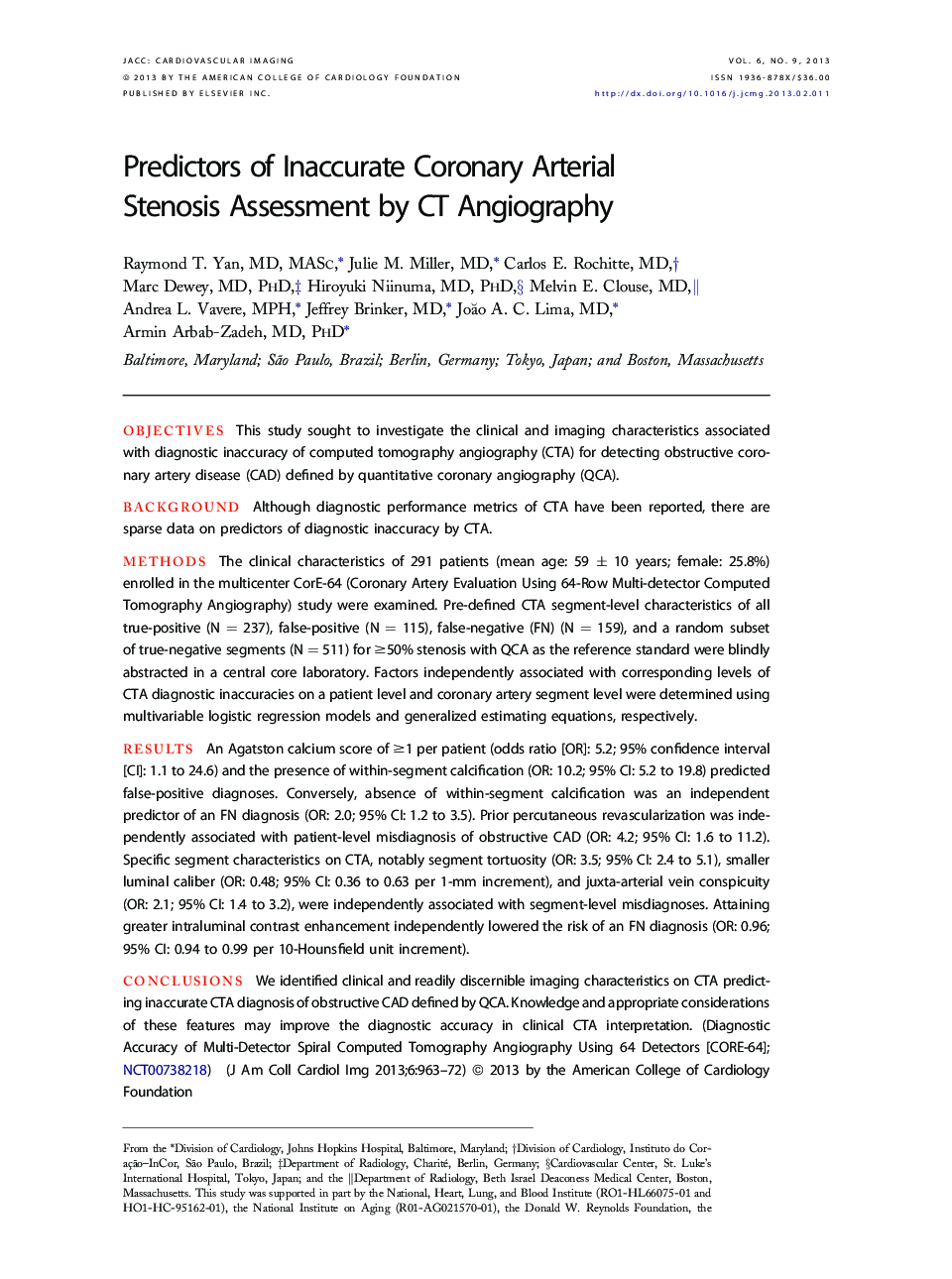| Article ID | Journal | Published Year | Pages | File Type |
|---|---|---|---|---|
| 2937869 | JACC: Cardiovascular Imaging | 2013 | 10 Pages |
ObjectivesThis study sought to investigate the clinical and imaging characteristics associated with diagnostic inaccuracy of computed tomography angiography (CTA) for detecting obstructive coronary artery disease (CAD) defined by quantitative coronary angiography (QCA).BackgroundAlthough diagnostic performance metrics of CTA have been reported, there are sparse data on predictors of diagnostic inaccuracy by CTA.MethodsThe clinical characteristics of 291 patients (mean age: 59 ± 10 years; female: 25.8%) enrolled in the multicenter CorE-64 (Coronary Artery Evaluation Using 64-Row Multi-detector Computed Tomography Angiography) study were examined. Pre-defined CTA segment-level characteristics of all true-positive (N = 237), false-positive (N = 115), false-negative (FN) (N = 159), and a random subset of true-negative segments (N = 511) for ≥50% stenosis with QCA as the reference standard were blindly abstracted in a central core laboratory. Factors independently associated with corresponding levels of CTA diagnostic inaccuracies on a patient level and coronary artery segment level were determined using multivariable logistic regression models and generalized estimating equations, respectively.ResultsAn Agatston calcium score of ≥1 per patient (odds ratio [OR]: 5.2; 95% confidence interval [CI]: 1.1 to 24.6) and the presence of within-segment calcification (OR: 10.2; 95% CI: 5.2 to 19.8) predicted false-positive diagnoses. Conversely, absence of within-segment calcification was an independent predictor of an FN diagnosis (OR: 2.0; 95% CI: 1.2 to 3.5). Prior percutaneous revascularization was independently associated with patient-level misdiagnosis of obstructive CAD (OR: 4.2; 95% CI: 1.6 to 11.2). Specific segment characteristics on CTA, notably segment tortuosity (OR: 3.5; 95% CI: 2.4 to 5.1), smaller luminal caliber (OR: 0.48; 95% CI: 0.36 to 0.63 per 1-mm increment), and juxta-arterial vein conspicuity (OR: 2.1; 95% CI: 1.4 to 3.2), were independently associated with segment-level misdiagnoses. Attaining greater intraluminal contrast enhancement independently lowered the risk of an FN diagnosis (OR: 0.96; 95% CI: 0.94 to 0.99 per 10-Hounsfield unit increment).ConclusionsWe identified clinical and readily discernible imaging characteristics on CTA predicting inaccurate CTA diagnosis of obstructive CAD defined by QCA. Knowledge and appropriate considerations of these features may improve the diagnostic accuracy in clinical CTA interpretation. (Diagnostic Accuracy of Multi-Detector Spiral Computed Tomography Angiography Using 64 Detectors [CORE-64]; NCT00738218)
